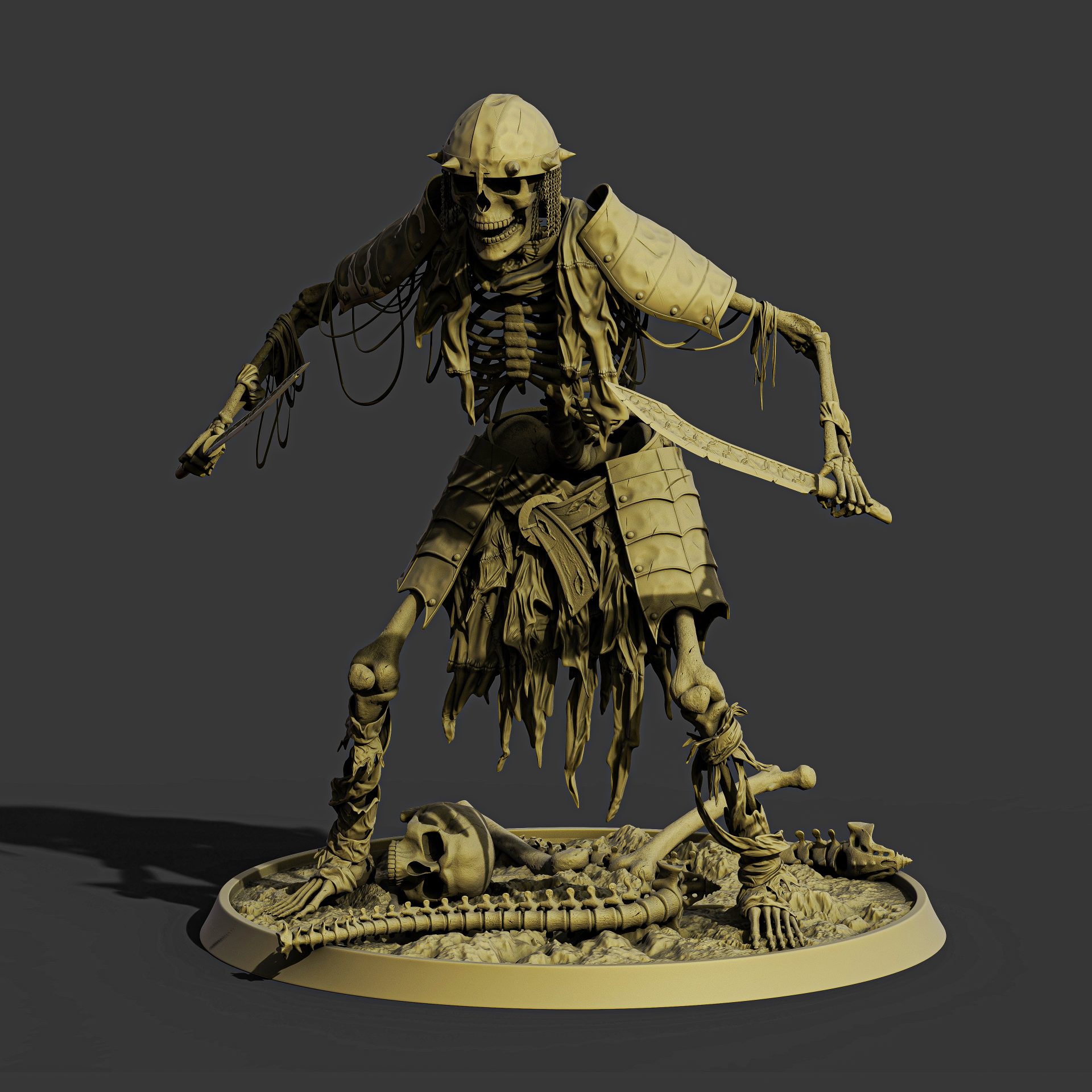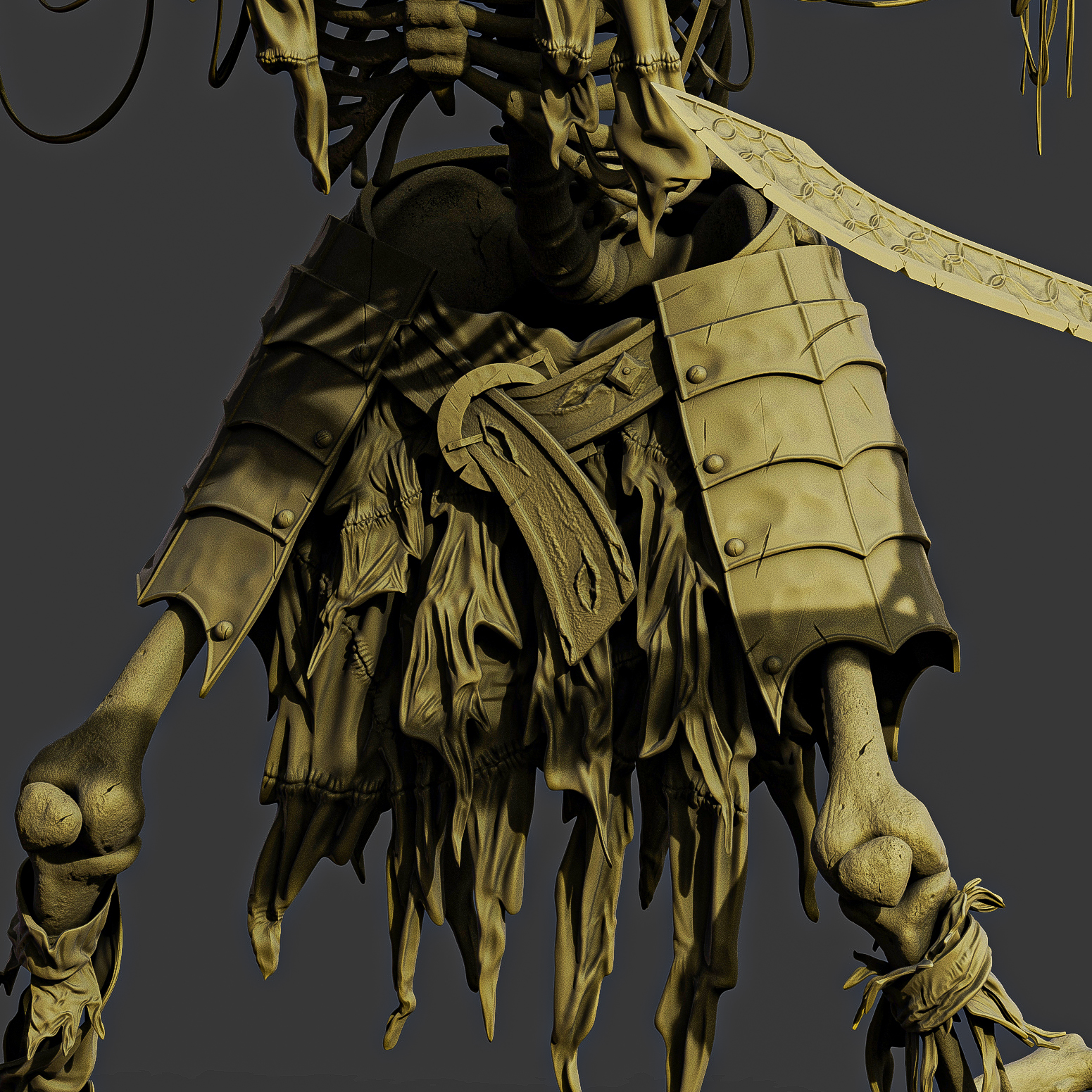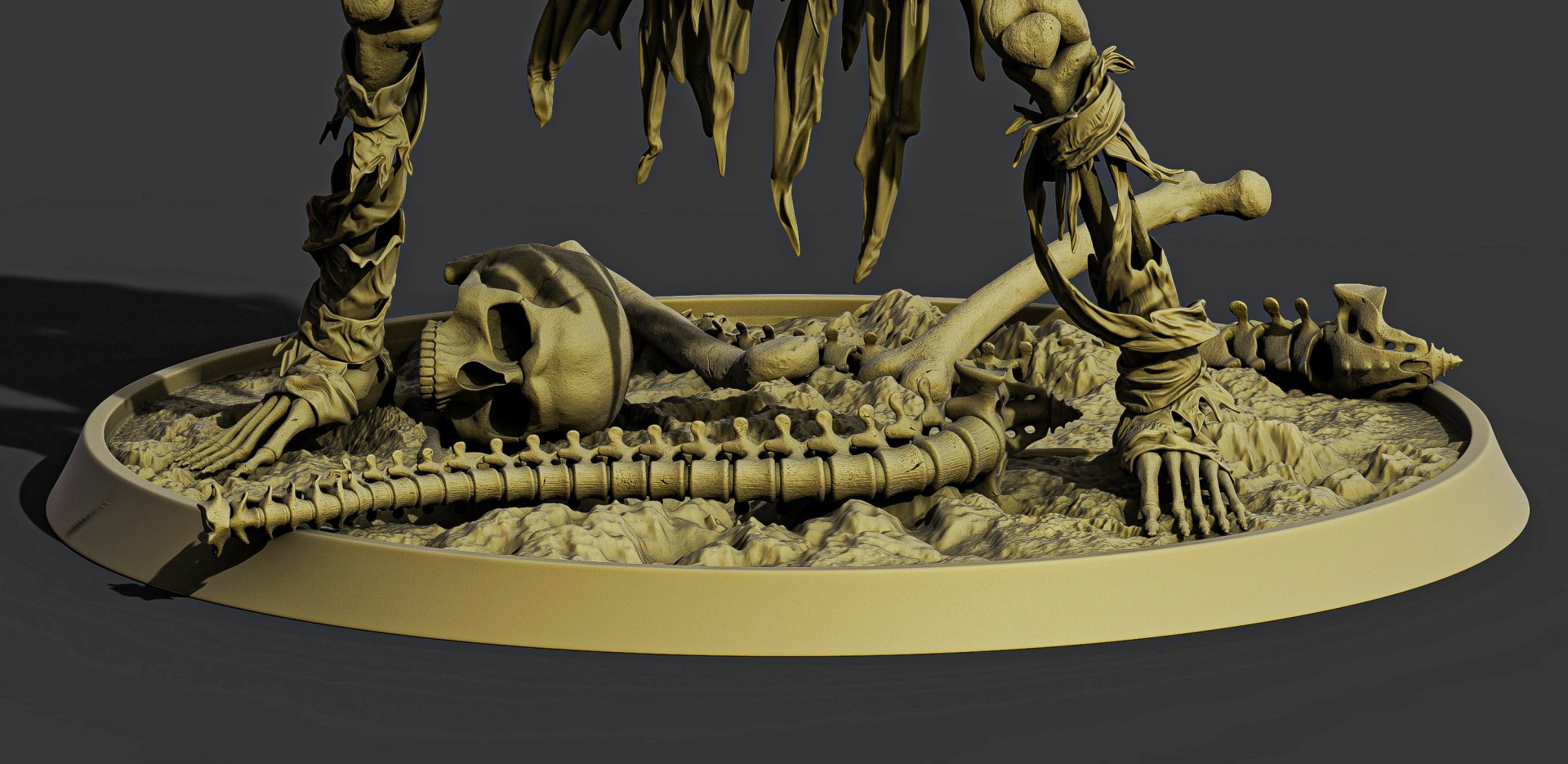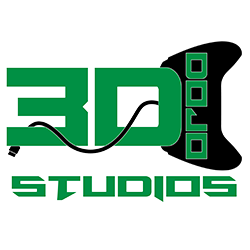


Forgotten Warrior
Client Overview: A board game enthusiast approached us with a unique request to create a Dungeons & Dragons (DND) style sculpture of a skeleton warrior. The client intended to 3D print the sculpture for use in a custom board game they were developing. However, the client was unsure of the exact design they wanted and relied on our expertise to create a compelling concept.
Project Objectives:
- Design a detailed and dynamic 3D model of a skeleton warrior suitable for 3D printing.
- Develop a concept that aligns with the DND aesthetic and gains client approval.
- Ensure the final model is optimized for 3D printing, maintaining both high detail and printability.
Approach: To kickstart the project, we began by discussing the client’s vision and preferences for the skeleton warrior. Since the client was uncertain about the specific design, we utilized a technique known as kit bashing to combine various elements and create a unique concept for their approval.
Design and Modeling:
- Concept Development: Leveraged kit bashing to mix and match different components, creating multiple design variations of the skeleton warrior. This iterative process allowed us to explore various poses, armor styles, and weapon configurations.
- Client Approval: Presented the different concept variations to the client, gathering feedback and refining the design based on their preferences. This collaborative approach ensured the final design aligned with the client’s vision.
- 3D Modeling: Utilized Zbrush to sculpt the detailed 3D model of the skeleton warrior. Zbrush’s powerful sculpting tools enabled us to create intricate details, such as bone structure, armor textures, and weapon designs.
Texturing and Rendering:
- Texturing: Applied realistic textures to the 3D model using Adobe Photoshop. The textures included bone textures, weathered armor, and weapon finishes to enhance the model’s visual appeal.
- Rendering: Used Keyshot to render the 3D model, providing high-quality visualizations that showcased the sculpture’s details. This step allowed the client to see the final model in a lifelike context before proceeding with 3D printing.
Challenges and Solutions:
- Unclear Client Vision: Since the client was unsure about the exact design, the initial challenge was to create a concept that resonated with them. By using kit bashing and presenting multiple variations, we were able to narrow down the client’s preferences and finalize a design that met their expectations.
- Detail and Printability Balance: Ensuring that the model was both highly detailed and suitable for 3D printing required careful optimization. We focused on creating a model with intricate details while maintaining structural integrity and printability.
Outcome: The final 3D model of the DND-style skeleton warrior was a resounding success. The client was thrilled with the unique and dynamic design, which perfectly captured the essence of a formidable skeleton warrior. The model was optimized for 3D printing, allowing the client to produce high-quality physical miniatures for their board game. The collaborative and iterative design process ensured that the final product exceeded the client’s expectations.
Software Used:
- Zbrush: For detailed 3D sculpting and modeling.
- Keyshot: For rendering and creating high-quality visualizations.
- Adobe Photoshop: For texturing and enhancing the model’s visual appeal.
